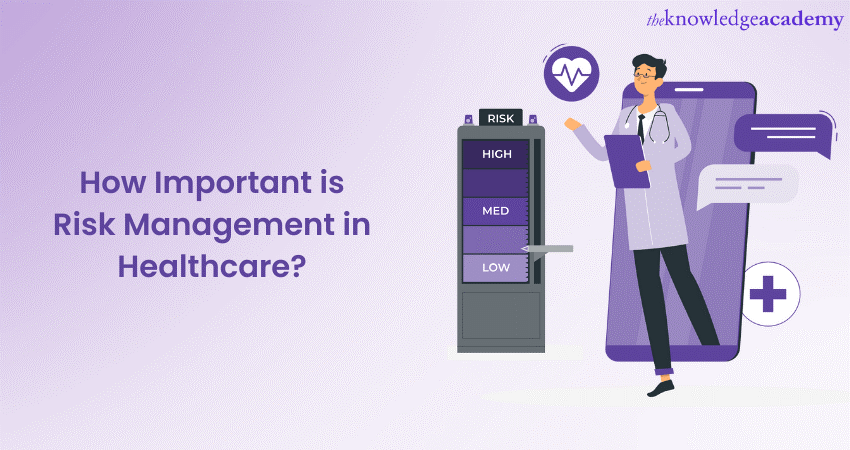Exploring the Expanding Importance of Risk Management in Organizational Strategy
Exploring the Expanding Importance of Risk Management in Organizational Strategy
Blog Article
Checking out the Significance of Risk Management for Effective Decision-Making Approaches
In the complex globe of organization, Risk Management emerges as a vital element in the decision-making procedure. The ability to recognize potential threats and possibilities, and plan accordingly, can lead to the difference in between success and failure.
Understanding the Idea of Risk Management
Risk Management, a vital element in decision-making, is commonly misconstrued or oversimplified. Risk Management involves organized and disciplined techniques, utilizing information and insightful evaluations. From economic uncertainties, lawful liabilities, critical Management mistakes, to accidents and natural calamities, it deals with numerous threats - importance of risk management.
The Function of Risk Management in Decision-Making Processes
In the realm of strategic preparation and organization procedures, Risk Management plays an integral role in decision-making procedures. Risk Management thus comes to be an essential device in decision-making, helping leaders to make informed selections based on a comprehensive understanding of the dangers involved. Risk Management serves as a crucial element in the decision-making processes of any type of organization.

Exactly How Risk Management Improves Strategic Preparation
In the context of tactical planning, Risk Management plays a critical function. Initiating with the identification of potential risks, it better includes the application of Risk reduction procedures. The function of Risk Management is not static however vibrant, as it demands continuous monitoring and adjusting of approaches.
Recognizing Prospective Dangers

Implementing Risk Mitigation
Risk mitigation methods can range from Risk avoidance, Risk transfer, to take the chance of decrease. Each technique must be tailored to the particular Risk, considering its prospective effect and the company's Risk tolerance. Reliable Risk reduction needs a deep understanding of the Risk landscape and the potential influence of each Risk.
Surveillance and Changing Techniques
Though Risk reduction is a crucial step in calculated planning, continual surveillance and modification of these techniques is equally important. This recurring process allows companies to recognize new risks and reassess existing ones, making certain the executed methods continue to be reliable in the ever-changing service setting. It additionally supplies a chance to evaluate the success of the Risk Management steps, permitting changes to be made where needed, more enhancing strategic preparation. Effective tracking and modification need using analytics and key efficiency signs (KPIs) official website to measure performance. These devices supply important data-driven understandings that can educate strategic decision-making. Surveillance and changing Risk Management techniques is an essential part for boosting a company's resilience and strategic planning.
Instance Studies: Effective Risk Management and Decision-Making
In the world of business and finance, effective Risk Management and decision-making often serve as the columns of flourishing business. These situations highlight the value of sharp Risk Management in decision-making procedures. These situations highlight the crucial role of Risk Management in strategic decision-making.
Tools and Strategies for Reliable Risk Management
Browsing the detailed puzzle of Risk Management calls for the best collection of strategies and tools. These devices, such as Risk signs up and heat maps, help in recognizing and evaluating possible threats. Techniques include both measurable approaches, like level of sensitivity evaluation, and qualitative approaches, such as SWOT analysis. These assistance in prioritizing threats based on their prospective impact and possibility. Risk response techniques, look at this now a crucial element of Risk Management, involve accepting, avoiding, transferring, or mitigating dangers. Tracking and controlling threats, through normal audits and testimonials, guarantee that the strategies continue to be effective. With these devices and methods, decision-makers can navigate the complicated landscape of Risk Management, consequently assisting in informed and reliable decision-making.
Future Trends in Risk Management and Decision-Making Methods
As we explore the large landscape of Risk Management, it comes to be noticeable that the devices and strategies made use of today will proceed to progress. Future patterns point towards a boosted reliance on innovation, with expert system and artificial intelligence playing considerable duties. These modern technologies will enable companies to forecast potential dangers with better accuracy and make more informed choices. Additionally, there will be an expanding focus on durability, not simply in managing threats however additionally in recovering from adverse situations. Finally, the idea of Risk culture, where every member of an organization knows and entailed in Risk Management, will certainly acquire extra importance. These trends advertise a more inclusive and proactive method towards Risk Check Out Your URL Management and decision-making.
Verdict

Risk Management hence comes to be an important device in decision-making, helping leaders to make enlightened choices based on a comprehensive understanding of the risks involved. Risk reduction strategies can range from Risk avoidance, Risk transfer, to take the chance of decrease (importance of risk management). Reliable Risk mitigation requires a deep understanding of the Risk landscape and the potential impact of each Risk. Risk reaction strategies, a key element of Risk Management, include accepting, preventing, moving, or mitigating risks. The concept of Risk society, where every member of an organization is mindful and entailed in Risk Management, will obtain a lot more prominence
Report this page